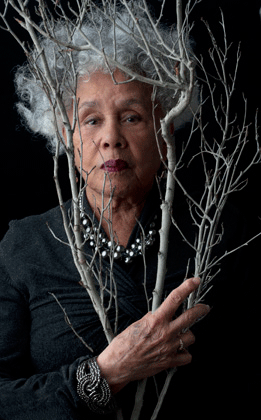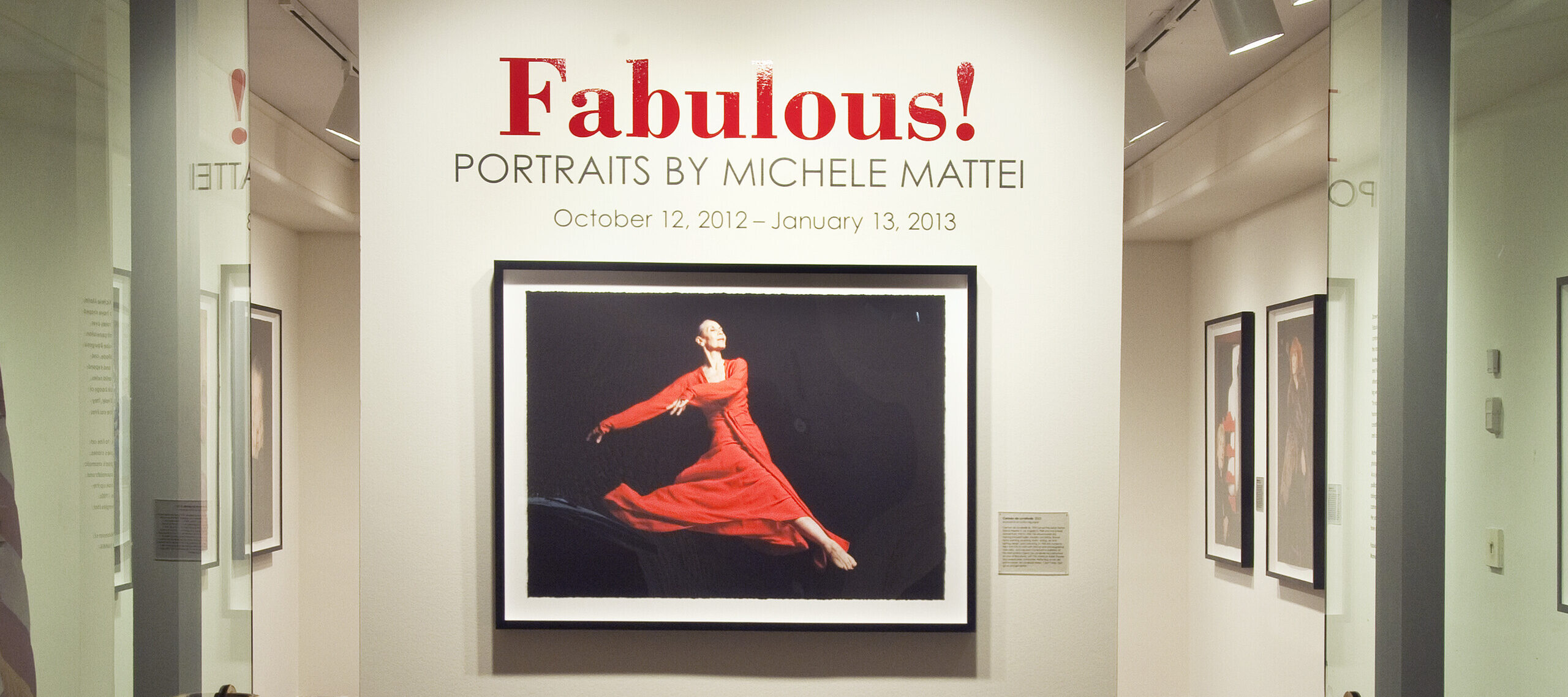NMWA’s exhibition Fabulous! Portraits by Michele Mattei presents a selection of Michele Mattei’s photographs of women who have shaped contemporary culture. Mattei, who began her career as a journalist before moving into photojournalism and then photography, interviewed her portrait subjects as she was photographing them.
This interview excerpt is a portion of Mattei’s discussion with artist Betye Saar (b. 1926):

Betye Saar [responding to Michele Mattei’s photograph of her]: Your camera has captured longing. It has a pensive quality that I like, and it also reflects my love of nature and of symbols. I always associate God with nature. This longing could be the expression of a desire to be one with God.
…When I was a child, Simon Rodia was building the Watts Towers. My grandmother lived on 113th Street, and we would walk to Watts to go shopping. We would walk over the railroad tracks and there, around a sharp corner, were the Watts Towers; I saw them being constructed. It was as if he were building magic castles. He had these piles of rubble and would go through it sticking all kind of trash, treasures, shards of ceramics in the wet cement. You could not tell me at the time that they were not fairy tales! It was magic, a sort of mystical experience. I’ve seen corncobs in there, I’ve seen tools. I think that was the beginning of me becoming an assemblagist.
Michele Mattei: Have you kept this connection with objects?
BS: Yes, but not in the same way. At a flea market or a shop, I put out my antennae, and I am attracted to certain things. I see it happening with my daughter Alison who also works with found objects. She says, “Oh, I saw this object, and I thought it really belongs to you!” Maybe it is just a sense of awareness.
MM: What is the first piece that you made that exemplifies your political change of consciousness?
BS: The Liberation of Aunt Jemima. It was 1972. Black Mammies were used as objects to hang in the kitchen, to hold a notepad. They had a string coming out of somewhere, a pencil. Those things were invented after slavery was abolished; they could not have actual slaves, so they made replicas to have a black person in the kitchen or a black jockey on their lawn. Those things were cute, charming, with bright color to decorate. Salt and pepper shakers and spice containers. I do not think people were smart enough to be really aware of what they were doing, but surely they were insults to black people. It was entertainment based on servitude.
It became my political goal to change that attitude.
The idea was to take an ordinary object and bring awareness to the horrific history behind it. At that time, it was the sixties. I collected a lot of negative symbols of negative stereotypes—Uncle Tom, Aunt Jemima, Little Black Sambo—and I incorporated them into my assemblages and collages, transforming them into a statement of political outrage.
When I did The Liberation of Aunt Jemima, I chose to take Aunt Jemima out of servitude and to make her a warrior because in real life she could not rebel.
The exhibition Fabulous! Portraits by Michele Mattei is on view at NMWA October 12, 2012–January 13, 2013.
